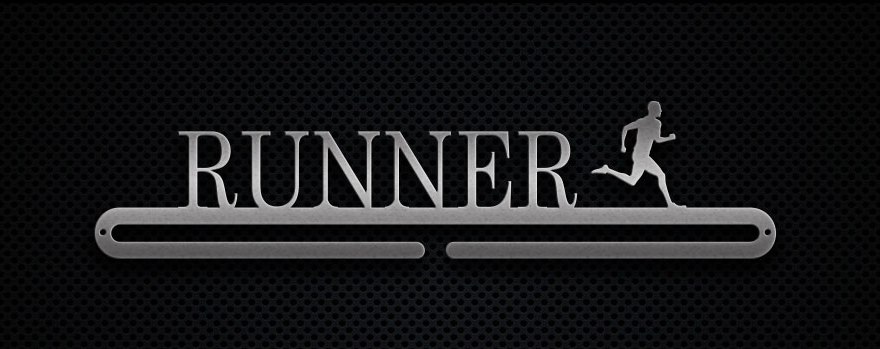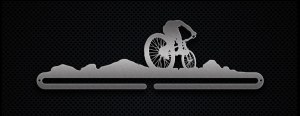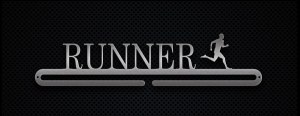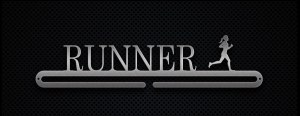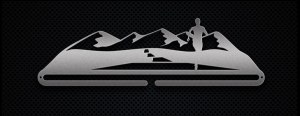- Age 35 – 65: Let’s say “ you’ve arrived” – after switching jobs and questioning your career, finally, in your late 30’s or into your 40’s, 50’s or 60’s+ you come to that odd and sudden realization that money suddenly is no longer the end goal – that you “have enough” to satisfy your needs – though not necessarily your wants. Meanwhile the questions pile up: “Am I really as old as my age says I am?” (How did that happen?) And then a little more subtly, “yes, where did my energy go? – and my waistline?” or, “How can I stay healthy?”
- Age 20 – 35: Instead, maybe you are in your 20’s or 30’s – finally “growing up,” finally have a real job and doing well, moving out and moving up, thinking about building a career and a family, fulfilling your potential. “How can I do all that and still stay in shape?” “Am I predestined to become yet another doughy pale office professional?”
- Age 10 – 20: Finally, lets imagine you have (or are) a grade school or junior high school kid – band, drama, national honor society, soccer, football, track, baseball – so many choices – what activities should you choose?
Let me propose that the activity that is the best answer to all the above questions – and I mean “best” in all its objective and subjective senses – is cycling. Riding a bike is the single greatest sport in the world.
I can prove it.
“Sure,” you immediately conjecture, “you must be some kind of cycling fanatic, aiming to convert the masses to your biased way of thought. Besides, who wants to cavort around in spandex and risk their lives in traffic?” Let’s examine each of the three examples above to determine whether there is any truth to my potential fiction. Further, let us add that the criteria for the ‘greatest’ is based on the sport’s contribution to health, longevity and happiness. Let’s work our way forward starting from the youngest age bracket above from
3) Age 10-20: the junior high,
high school, or college kid. Normally soccer, track, football, baseball, or academic pursuits or some combination are the typical achievement oriented activities for this
age group. Rightly so – all of these have a teaming aspects and bring about important developmental opportunities including discipline, social development, and balancing individual performances against team gains. For most of these activities, true victories and the associated celebrations come about from the performance of the group rather than the individual – a great corollary for the modern workplace. For all the above reasons,
Team sports are a mainstay of youth development programs the world over and provide many valuable lessons. There is just one huge, glaring problem – team sports for these kids tend to end as soon as high school ends. For a smaller percentage, it ends in college. And for that incredibly rare few (1 in 10,000? 1 in 100,000?) it means a few years as a professional.
Regardless, the fundamental flaw of team sports remains the same – they end. Joe Montana isn’t playing adult league football somewhere and for 99.9% of these talented athletes the result is the same – ‘retirement’. There is no opportunity to create an extended healthy routine from these kinds of team sports. If the goal is health, longevity, and happiness, then these sports have a very limited shelf life.
Want to help your junior-high school student have a full, healthy, active life? Consider individual sports… in particular cycling…
Let us consider the second age bracket, 2): the twenty/thirty-somethings. Work lunches, late nights, travel and the associated fast foods, Friday night beers and cocktails – all without the active lifestyle and sports of high school and college – including the basic physical activities of walking across campus or playing intramural Frisbee.
Witness the arrival of the second ‘freshman 15’ weight gain. Team sports may still be an option – and if you are single – they may still be the best option: find a league dominated by the opposite sex and you’ve got a surefire way to potentially ensure continued reproductive health (and the motivation to continue it.)
Sooner or later though, the odds are you’ll settle down – and suddenly 3 hour softball games a couple of nights a week with single girls in short shorts and tight t-shirts, combined with post game rituals of pitchers of beer after the game may not fly so well with your fiancé – and definitely not with your pregnant wife even if you are both part of the league. And, seriously – is swatting an oversized ball and jogging a few bases really an equal balance to the beer, shots, hamburgers and brats?
At this point, running might seem the best option – easy to do anywhere, no equipment other than shoes and shorts – even city living presents no serious obstacle. That is, until the first injury… Lots of 20/30 somethings decide to train for marathons – often with the doubly noble goals of getting fit and accomplishing a difficult task, as well as raising money for charity. However, there is a significant downside. According to several studies, running a marathon can create irreparable damage to bones and tendons. Even if an injury isn’t serious, a sidelined ‘occasional’ runner may well lose weeks or months of activity while recovering, and will likely be more cautious in the future.*
(*sidenote – in 31 years of cycling I’ve never had an injury that kept me from riding, and indeed, all injuries were from crashing – not from the actual activity of pedaling).
Finally, 1): the productive 35/40/50/60+ year old. No longer in the full bloom of youth where muscle pulls are rare and bodies recover quickly, these maturing adults, professionals, teachers, factory workers, working mothers and fathers etc. still need exercise. Indeed it is more imperative than ever for success in work, family – in life – to reduce stress and increase productivity, as well as to manage weight and blood pressure: heart disease is the number one killer of adults in the USA.
Running remains a temptation – but becomes more and more fraught with injury perils with the exception of those naturally birdlike lightweight athletes whose frames can withstand the pounding.
Now those other team sports – softball, racquetball, tennis, football etc. become more and more untenable – either from a schedule standpoint – or from an injury standpoint. In the modern office workplace it seems that a majority of casts and splints are a result of one of these sports – the sudden twists, sideways movements, stops and starts – these begin to push the limits of the aging musculature and thinning bones.
So… whats left?
Surfing and downhill skiing may actually be the perfect combination of “flow” activities that are seasonal and sustainable, but lets be fair to the other 98% of Americans that don’t live near surf and mountains. What remains for the majority are swimming, cross country skiing, walking, and cycling. All of these are low impact sports and tend to be relatively injury free. Each has their limitations – lets start with swimming. For some dedicated few water rats that don’t mind being in a liquid habitrail with no sights and no sounds, swimming may be the perfect addiction – safe, all muscles used, aerobic, no impact – an excellent choice assuming you live near a gym with a pool that has lanes available and you don’t mind all of those other limitations.
How about cross country skiing? Potentially the ‘perfect sport’ for winter – scenery, low impact, all muscles, strength, power, speed, and aerobic conditioning – it also requires… snow. Not exactly year round.
So we are left with walking and cycling. Walking is amazingly healthful – a long walk burns fat, strengthens muscles, improves coordination, and gets oneself outside (weather permitting) to bring in that other significant contributor to health and reduced stress – nature.
That said, walking feels a bit mundane for many – and because it limits output, is necessarily a low aerobic exercise – very difficult to approach aerobic thresholds or test oneself.
Finally – we are left with cycling. An interesting side-note here: guess what, according to several recent polls, is the number one preferred leisure activity for adult Americans? No – it’s not cycling, running, skiing, swimming, baseball, golf, soccer or football.
It is ‘going for a drive.’ Americans love their roads and their native invention the automobile.
Cycling is low impact – the smooth rotation of the pedals causes few injuries. Cycling is both aerobic, as well as anaerobic – the body is naturally stressed to accompany the needs to accelerate, shift gears, climb hills. The fat burning characteristics of low aerobic efforts like walking are enabled during flat steady efforts, but this is complemented by the muscle and bone building anaerobic strength exercises caused by accelerations, stop signs and hills. Cycling provides the perfect balance of aerobic, strength, and aesthetic activities in one form.
So… there you have it – for teens, an individual sport like cycling creates a lifelong skill and interest that will increase their lifespan and happiness. For twenty-somethings it can replace time consuming team sports or injury prone activities like running, and for the rest of us 30+ athletes, cycling provides a low impact sport that burns fat, builds bone and muscle and serves as a non-sedentary surrogate for the #1 US pastime of ‘going for a drive.’
But all that is a lot of data – let me end with two stories:
Story 1: When I was growing up – as a young teen – there was a guy in my cycling club named TJ Hill that led a lot of the rides where I grew up in Detroit. He was sort of ageless – lean, muscular, and incredibly strong. On club rides he would take the lead for long stretches and we would all draft off his strong legs and amazing endurance.
I went to college over 20 years ago and never moved back to Michigan. Nonetheless a couple years back I joined the email newsletter of my old cycling club in Detroit – the “Wolverine Sports Club” and lo and behold, TJ was still leading rides and a key figure in the club.
For the last couple of years I continued to read about his exploits without much thought – “that’s TJ” I thought. It never really occurred to me that TJ could have aged in the process.
It wasn’t until I read a ‘race result’ from a 100 mile tour/race in Northern Michigan a couple summers ago that it brought home the legacy I had always observed but never comprehended growing up. Those ‘ageless’ guys leading the rides? They weren’t 20 or 30 something athletes – they were 40/50/60 somethings continuing to practice their craft.
The race result I read? 1st in the 70 – 75 year old category – TJ Hill. 100 miles: time? 4 hours and 17 minutes. 73 years old and he averaged over 23 mph for 100 miles. TJ is now 75 and rode 12,313 miles last year (yes – that’s nearly 40 miles a day, every single day). He just got back from a two month training camp in Alabama where rode 58 days straight and averaged 67 miles every day.
Sure – he’s a freak – an anomaly of nature to do so much and do it so fast. But do this – go to a charity cycling event or a century ride – you’ll be amazed at the number of healthy older individuals out making their mark and helping others.
Story 2: This one is simple. Think back to when you were a teen or maybe a young twenty something. Remember how you used to skip stairs, or bounce down them? Sometimes you’d take them 3 at a time, and with a good rhythm seek to skip and reach for the 4th stair? Remember sprinting all out to chase the dog or a Frisbee or having the control while running to leap high in the air off a stump or curb? Remember that confidence, quickness and coordination? (And lack of fear?)
I turned 40 in August. I’ve been a cyclist for 32 seasons. Today I skipped 3 steps (and considered a reach for the 4th) on my way chasing my 7 year old daughter up the stairs. Sometimes in the winter, when work overwhelms and riding in the gym or on trainer becomes a bit boring and lags, I’ll start to feel my age, walking flat-footed, clearing the cobwebs from my back when bringing things up from the basement – but I’ll tell you this: with the cycling season back in full swing and being back outside riding and enjoying the spring air almost every day – my youth is still here. I pad lightly around the house on the balls of my feet with a spring to my step no different than when I was 19, and when I tense my leg muscles to chase my daughter or my dog out in the lawn – it is still with a burst of furious speed that pursue her giggles and flailing tresses.
It’s hard to describe, but after a good hard ride, you’ll never feel more alive:
THAT’s why cycling is the single best sport in the world
– because you can experience runner’s high without running – and see the world around you while doing it.

